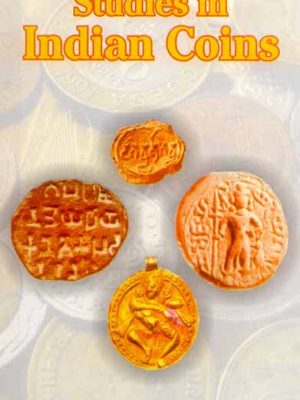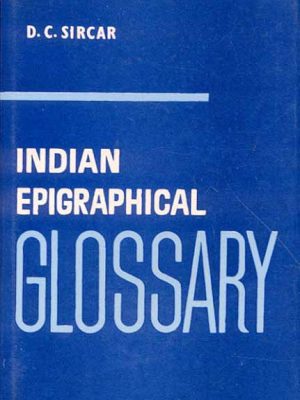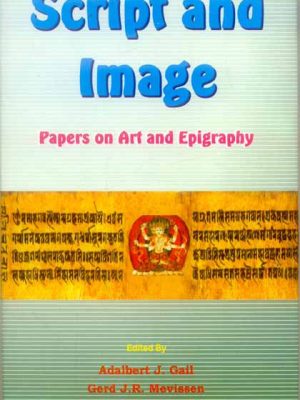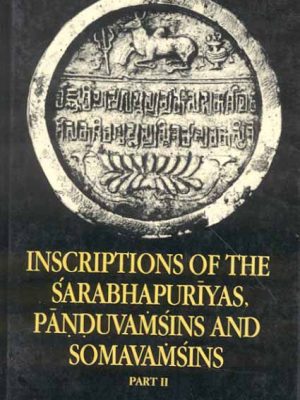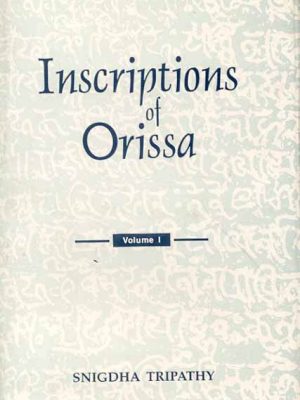Epigraphy, Palaeography and Numismatics
Epigraphic documents have generally been considered the most reliable as they are often contemporary to the period they talk about. Epigraphic sources have been used extensively for reading early Indian history. Indian Epigraphical Glossary, epigraphy is a sine qua non for constructing the political and cultural history of ancient India. Paleography is the study of pre-modern manuscripts and numismatics is the study of coin collection. These help us understand the history and act as a link between the present and the past.
-
Studies in Indian Coins
Studies in Indian Coins
The present book is an authoritative and authentic source for the study of Indian coins. It not only describes the coins but also studies them critically in all their aspects. The points which are dealth with here are on numismatic studies in India; Satamana and Sana; Kautilya and Buddhaghosa on coins; silver coins of Vasisthiputra Satakarni; alleged coins of the Mahisa kings; coins of semi-independent rulers; date of Isvaradatta’s coins; Petluripalem hoard; some problems of tribal coins; coins of Kumaragupta I, Harigupta and Ramagupta; coins of Muhammad bin Sam and Prthviraja; coins of Kakatiya Prataparudra I; Gajapati Pagoda, Ganga Fanam and Ramatanka; coins of Bhairavasimha; Maratha mint under the Peshwas; Cowrie-shell, rupee and pice. In describing the features of a particular class of coins from the standpoint of standard, style and fabric or in discussing the significance of the numismatic terms, the author has utilized the literary data which have a bearing on them.
₹895.00Studies in Indian Coins
₹895.00 -
Indian Epigraphical Glossary
Indian Epigraphical Glossary
The interested world of scholars is sure to receive with gratitude this
latest work from the erudite pen of Prof. D.C. Sircar who has opened up for
us new vistas in the study of Indian antiquities. Prof. Sircar’s Indian
Epigraphical Glossary, characterised by a wide sweep of vision based on a
meticulous attention to details, is a contribution of the utmost
importance. Here one finds an embarras de richesses in a comprehensive
dictionary of technical expressioins found in documents embracing nearly
2000 years in time and the entire Indian sub-continent in space and written
in a variety of languages. It offers a panorama of Indian political and
cultural life as enshrined in a series of expressions which are precise and
historically important. Many of them remained obscure, and Prof. Sircar,
with his thorough knowledge of the subject in the study of which he has
spent a life-time, has succeeded in most cases in giving quite satisfactory
interpretations. The mass of material in this invaluable publication, which
will continue to be an indispensable work of reference for many years to
come, brings in a volume of lexical material for the compilation of an
exhaustive Dictionary of Sanskrit. The importance of the work, which I
would consider epoch-making in the domain of Indology, has been
considerably enhanced by three remarkable Appendices.
₹1,495.00Indian Epigraphical Glossary
₹1,495.00 -
Script And Image: Papers on Art and Epigraphy
Script And Image: Papers on Art and Epigraphy
The articles collected in this volume, which were originally presented in the panels on art and epigraphy at the 12th World Sanskrit Conference in Helsinki, Finland, illustrate the depth, diversity and sophistication of recent studies in these subjects by scholars from several countries. The subjects treated include new archaeological and epigraphic dicoveries, the relation between textual and iconographic traditions in both Hindu and Buddhist contexts, the historical and Cultural analysis of inscriptions, and the application of computer technology to the study of Indian Paleography. The essays contained in this book cover a broad range of topics in terms of chronology, geography, and sectarian tradition.
₹725.00 -
Inscriptions of the Sarabhapuriyas, Panudvamsins and Somavamsins (2 Vols.)
Inscriptions of the Sarabhapuriyas, Panudvamsins and Somavamsins (2 Vols.)
This work is a product of the Inscriptions of India Programme of the Indian Council of Historical Research undertaken with a view to making inscriptions dating from circa sixth to fourteenth century a.d. available in handy volumes. Part I studies the inscriptions of the Sarabhapuriyas, Panduvamsins and Somavamsins who played a major role in shaping the destinies of the Chhattisgarh region of Madhya Pradesh (Kosala) and the adjoining region of Orissa from about the sixth to the early twelfth century a.d. It provides a background to the study of the inscriptions by attempting to deal with their formal aspects like the format, palaeography, language, orthography, contents and methods of dating and to trace, for the first time, the evolution of their draft. Dharmasastra injunctions regarding the preparation of deeds of land-grants and their actual epigraphic parallels have also been discussed at length. The work sheds welcome light on the chronology and history of the region during the period in question and offers several original suggestions basing on fresh discoveries and new interpretation of known records. With its many interesting features, the work will surely be found enlightening by students and researchers delving deep into early Indian history and epigraphy.
₹1,695.00 -
Inscriptions of Orissa (Vol. 1): (Vol.I: Circa Fifth-Eight Centuries A.D.)
Inscriptions of Orissa (Vol. 1): (Vol.I: Circa Fifth-Eight Centuries A.D.)
The present volume inscriptions of orissa, the result of the intellectual labour, covers a subject
of immense value for those interested in the reconstruction of ancient and
mediaeval history and culture of Orissa, the major part of which is still
in darkness. Based on the original documents in the form of copper plate
and stone records, discovered from different parts of Orissa, it presents
almost a complete picture of the history and culture of the period (C.A.D.
5th-8th century A.D.) in Orissa as part of the wider scene that obtained in
the Indian sub-continent.
The volume deals with as many as sixty valuable epigraphic records that
fall within the period set for the book which have been divided into five
sections along with an extensive introductory analysis of the texts studied
from various aspects. It presents a chronologically classified list of
inscriptions which are of undoubted historical importance. In its
originality of materials and the manner of presentation, the volume is sure
to remain a source book for the research scholars in this field of their
study.
₹795.00

